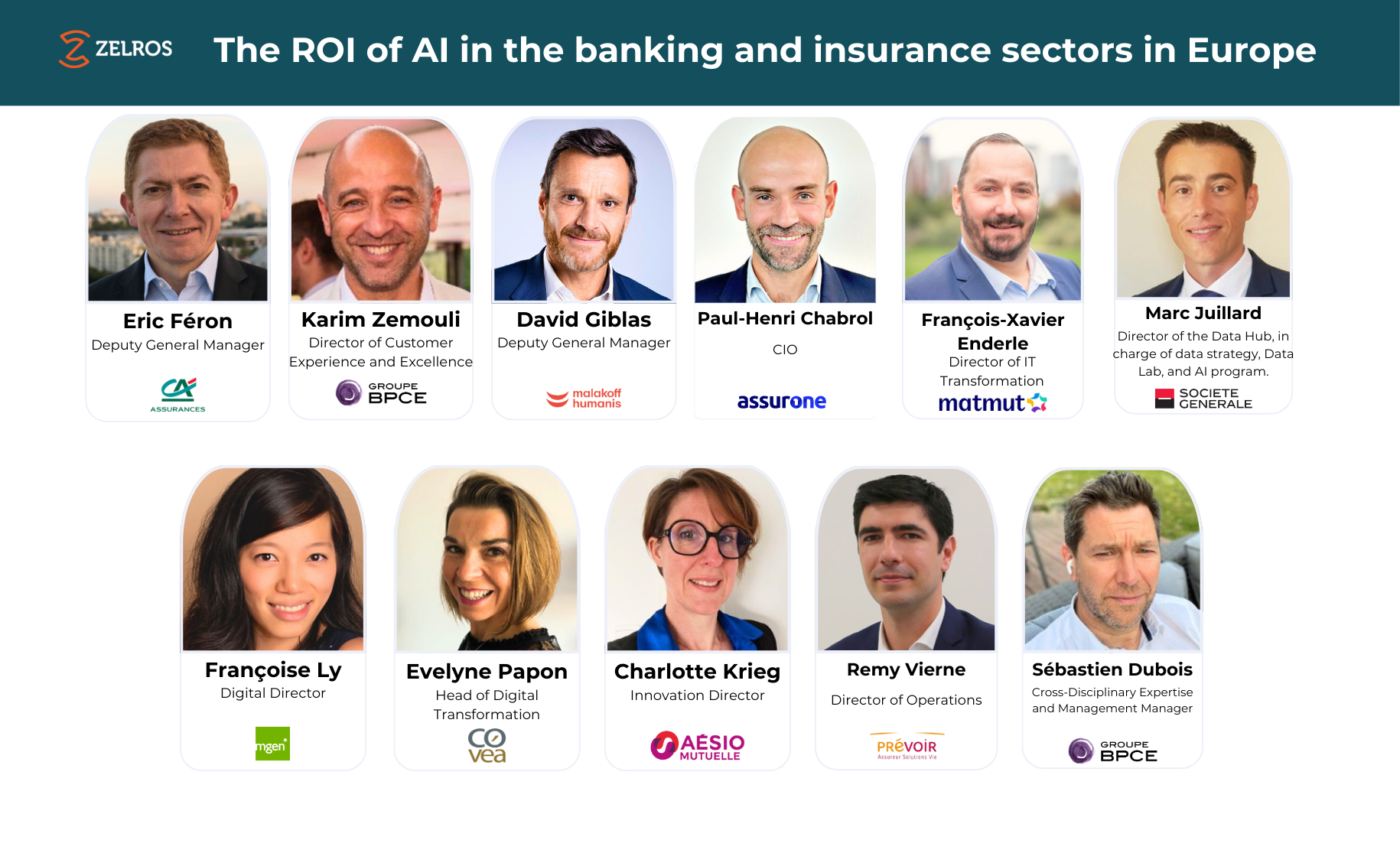A pathway to insurance process automation with Artificial Intelligence solutions

By Paul-Henri Chabrol, Head of Customer Success
A few days ago, my colleague Stanislas Ribault wrote an article about Lemonade entering the French insurance market. Launched 3 years ago in the US, Lemonade received a lot of attention when they announced they could process claims in less than 3s, thanks to their claim handling Artificial Intelligence, personified as chatbot Jim. As an insurance professional, I thought this would give a huge impulse to the industry to rapidly adopt AI in process automation. It seems to have taken longer than I thought. A survey in France even showed that one French out of two is defiant vis à vis his insurance company1 and even more in the US2 on the health insurance market. At Zelros, we believe that process automation will be a key trend going forward for insurers to gain trust from customers, by providing immediate answers while ideally positioning them on new distribution platforms.
Automation enables customer satisfaction and business growth
McKinsey predicted that in 2030, manual underwriting will no longer exist for most personal and small-business products across life and property and casualty insurance3. This illustrates the first benefit of automation through cost efficiency. Because processes are automated, insurers can avoid putting human effort and focus their workforce on more value-added processes. While this is clearly one of the benefits, I believe most of the interest lies elsewhere.
Customers of insurance companies today are Amazon customers as well. They find on Amazon immediately the products they’re looking for, delivered in record time at their front doors. These customers have the exact same expectations from their insurer. These expectations might even be higher, because in many countries, insurance products are mandatory. People need home insurance to rent flats or motor insurance to drive cars. These people demand immediate answers when getting their motor policy, asking for credit insurance or claiming payback after an accident in their home. Insurers can meet these expectations by automating their processes all along their value chain, from distributing the products and to serve their customers perfectly when it matters the most, when something bad happens.
The second area of benefits is growth enablement. Insurance business will be more and more intermediated through digital platforms and marketplaces. The list of examples is growing everyday: Airbnb is delivering renter insurance, Amazon is offering delivery guarantees, booking.com proposes travelers insurance or even Meero distributes insurance for photographers. Insurers who want to distribute on these platforms need to match their standards : immediate, simple and adaptive. Without full process automation on key activities, traditional insurers will struggle to exist in this ecosystem and will be challenged by full digital players.
Why isn’t the insurance industry moving faster?
Insurance business processes have three common elements that complexify the full automation of the customer experience:
1 / they are highly document intensive, mainly due to regulations. To complete a transaction, a customer is required to send over an ever richer set of documents, certifying his identity, the source of funds, his address, his tax liability,… To complete their application, prospects need to send proof of residency, identity documents,… The business processes are then dependent on the people performing the indexing, the checks and extracting the key information.
2/ they involve multiple expert decisions. For example, a new business request on credit insurance will typically involve a broker to distribute the product, an underwriting expert to assess the risk profile of the applicant, a medical expert (and potentially a GP) to check medical background and finally a customer service agent to create the policy in the system and perform compliance checks. These multiple touchpoints require a very complex coordination and workload management to react at the speed expected by the customer.
3/ they involve a vast number of IT systems. In a traditional insurance IT landscape, there’s a document processing system doing indexing of the documents received, then a medical underwriting system to check the application versus business rules and finally a policy administration system to create and administer the policy. Passing information automatically from one system is costly and complex as many of these systems are legacy technology aggregated over the years.
So what’s the path to automation in insurance?
In transformation initiatives, there’s a choice between “big bang” end to end transformation and incremental updates. Trying to automate the whole process in one shot project is likely to fail, as all AI projects embed a strong alea in their delivery. For example, the following questions can only be answered after the kickoff of the initiative: is there enough data to use, is there signal in the data that is usable, what is the reachable performance of the AI model given state of art technologies and data available,…. A transformation path is then to solve one complex problem at a time and then connect the dots with proper monitoring. For example, one of our customers wanted to process their claims in a shorter time frame to comply with regulation. It started by automatically reading identity documents received from beneficiaries with Zelros AI in a couple of weeks. This already enabled significant friction reduction in the operation department within a couple of weeks only. Further steps in automation came later when remaining AI elements like case complexity identification and semantic analysis of legal text were being delivered.
In the path to automation, time matters. Continuous improvement and feedback loops enable AI systems to improve over time. A learning curve could be simplified on the graph below :

The beginning of the automation journey will deliver gains on small elements of the value chain. The target automation goal, reached after several iterations of continuous improvement, will deliver quantifiable results on the overall value chain.
From a technology standpoint, three key dimensions of Artificial Intelligence applied to insurance business processes are powering end to end automation.
1/ Automated document reading, enabling document type recognition and information extraction. The combination of AI techniques, such as Natural Language Understanding, Computer Vision and classification algorithms, allow recent algorithms to read the types of documents that policyholders are sending with their phones : ID cards, driving licences, accident reports, tax returns… Zelros delivers this at scale in its Documents2Insights module.
2/ Fully transparent decision making algorithms. End to end automation involves a chain of algorithms used in real time. They need to be fully explainable to guarantee an audit track of the decisions taken. For example, automation of claims involves a series of expert decisions : identify responsibilities between drivers, predict an estimated amount of reimbursement, predict the likelihood of a customer to accept cash settlement,… Zelros delivers fully explainable AI at a local level (i.e. per decision) and at a global level on the whole data set.
3/ A continuous improvement AI platform based on feedback loop and AI model monitoring. AI algorithms need to run on platforms that enable learning from experience. Algorithms have to be updated when real life data is different from training data. A continuous improvement AI platform detects what to update in the algorithm based on real usage. For example, a broker uses Zelros solutions to automate their motor insurance new business process. He increased its document automation rate by 50% by sending back the non compliant elements to the Zelros platform. Zelros suggested improvements to the online subscription funnel, as the initial UX misled customers to drop the wrong file in a predefined zone, which resulted in a significant increase in automation rate.
To conclude, we believe at Zelros that Artificial Intelligence enabled solutions will empower insurance players to keep up with the rising expectations of their customers. It can give them today the acceleration they need to have the real time experience that everyone now expects when engaging with a brand.
Interested to see Zelros in action? Send an email to hi@zelros.com
1. les francais et l’assurance 2019
2 Statistia: trustworthiness of US health insurance companies in 2019
3 McKinsey future of insurance 2030

